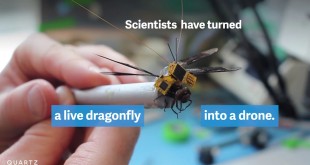Augmented Human refers to a concept that involves enhancing or extending human abilities using advanced technologies such as artificial intelligence, biotechnology, robotics, and other emerging technologies. The term “augmented” implies that the human being is being improved or enhanced in some way, often beyond what is considered normal or natural.
While we are already experiencing an increase in our natural abilities thanks to wearable devices, such as smartwatches and smartphones, Human augmentation goes a step beyond, enabling us to perform actions beyond our limits of our natural capabilities, whether physical or mental, with the help of tools that practically integrates into our bodies.
Examples of augmented human technologies include exoskeletons that allow humans to lift heavy objects or walk long distances without tiring, brain-computer interfaces that allow people to control machines with their thoughts, and implanted devices that can monitor and regulate bodily functions.
The goal of augmented human technology is to enhance human capabilities and overcome physical or cognitive limitations, thereby improving quality of life, productivity, and overall well-being. However, there are also concerns about the ethical implications and potential risks associated with these technologies, particularly in terms of privacy, security, and unintended consequences.
Neuroprosthetics, brain-computer interfaces (BCIs), and exoskeletons are among the most promising and rapidly advancing technologies in the field of augmented human. Each of these technologies focuses on enhancing or restoring different aspects of human physical or cognitive abilities.
For more details please visit: The Augmented Human: The Rise of “superhumans,” or Human 2.0
Neuroprosthetics are devices that interface with the nervous system, including the brain, spinal cord, and peripheral nerves, to help restore or enhance sensory, motor, or other functions. They are typically designed to replace or supplement lost or impaired biological functions, such as vision, hearing, or movement, by providing electrical or other types of stimulation to nerve cells.
One of the most exciting areas of research in neuroprosthetics is the development of devices that can be controlled directly by the user’s thoughts. These brain-computer interfaces (BCIs) can be used to control prosthetic limbs, type on a computer, or even manipulate virtual objects in a game or simulation. BCIs work by detecting and interpreting the electrical activity generated by neurons in the brain, and translating this activity into commands that can be used to control an external device.
A brain-computer interface (BCI) is a system that allows direct communication between the brain and an external device, such as a computer, without the use of traditional motor outputs like muscle movements. The goal of BCI technology is to provide a means for individuals with severe motor impairments or disabilities to interact with their environment and control devices using only their thoughts.
Exoskeletons are wearable robotic devices designed to augment or assist human physical abilities. These devices typically consist of a frame or structure that fits over the user’s body, along with motors, sensors, and other components that enable it to provide assistance or resistance to movement. Exoskeletons can be designed for a wide range of applications, from military and industrial use to medical and rehabilitation purposes.
There are two main types of exoskeletons: powered and unpowered. Powered exoskeletons use motors or other actuators to provide assistance or resistance to movement, while unpowered exoskeletons use mechanical linkages and springs to assist or resist movement.
The field of augmented human healthcare has the potential to greatly improve the quality of life for people with disabilities and injuries. Through the use of advanced technologies, such as neuroprosthetics, brain-computer interfaces, and exoskeletons, healthcare providers can help individuals with physical impairments to regain mobility, communication, and independence.
Augmented human technology also has the potential to enhance learning and cognitive abilities, making education more accessible and effective for a wider range of individuals.
Global Human Augmentation Market
The Global Human Augmentation Market is estimated to be USD 135.1 Bn in 2022 and is projected to reach USD 357.13 Bn by 2027, growing at a CAGR of 21.46%.
The human augmentation market includes a wide range of products and technologies, including exoskeletons, prosthetics, brain-computer interfaces (BCIs), wearables, and implants. Some of the key players in the market include Ekso Bionics, Cyberdyne, Raytheon, Google, and Lockheed Martin.
As the market for human augmentation continues to grow, there are a number of ethical, legal, and societal concerns that must be addressed, such as ensuring the safety and effectiveness of these technologies, preventing discrimination and inequality, and protecting individual privacy and autonomy. Nonetheless, the human augmentation market is expected to see continued growth in the coming years as new products and technologies are developed and as more people seek to enhance their physical and cognitive abilities.
Drivers
The human augmentation market growth is driven by the development in the healthcare sector, growing requirements for wearable augmentation products and the increasing use of exoskeletons in military applications.
High Demand For Wearable Augmentation Devices In Healthcare Sector
Recent Advent Of AI-Powered Wearable Devices For Restoring Vision And Hearing
Relaxing Brainwaves To Reduce Anxiety And Reviving Mixed Reality Increasing Manufacturing of Miniaturization of Sensors and Fast Processing Chipsets
The global human augmentation market is going to see a considerable amount of growth in the coming years. This is due to the advent of the AI-powered wearable devices and the advancements in technology like the availability of the fast processing chipsets and sensors being miniaturized, usage of brain-computer as interfaces and nanotechnology evolution are among a few factors which contribute to the growth of the market.
Restraints
High Cost of Human Augmentation Devices
Health Concerns Related to AR and VR Technologies
Opportunities
Rising Use of Human Augmentation Technologies to Ensure Safety and Improve Strength of Military Personnel
Growing Implementation of Human Augmentation Technologies in Industrial Applications
Challenges
Risk of Data Breach and Identity Theft
Dearth of Skilled Personnel for Constant Modifications in Devices
Development of Human Augmentation Products at Larger Scale and Offering Them at Lower Prices
Market Segmentations
The Global Human Augmentation Market is segmented based on Product Type, Functionality, Application, and Geography.
By Product Type, the market is classified into Wearable Devices, Virtual Reality Devices, Augmented Reality Devices, Exoskeletons, and Intelligent Virtual Assistants.
By Functionality, the market is classified into Body-Worn Products and Non-Body-Worn Products.
By Application, the market is classified into Consumer, Commercial, Medical, Aerospace & Defense, and Industrial.
By Geography, the market is classified into Americas, Europe, Middle-East & Africa and Asia-Pacific.
Industry
Key companies include Atheer Inc, Atoun, B-Temia Inc, Casio, Cyberdyne Inc, Cyberglove Systems Llc, Ekso Bionics Fossil Group Inc, Gaemin Ltd, Google LLC, GOQII, Inbenta Holdings Inc, Lifesense Group, Magic Leap, Merge Labs Inc, Mobvoi, Mycroft Ai Inc, P&S Mechanics Co. Ltd, Polar Electro, Raytheon Technologies, Rewalk Robotics, Rex Bionics Pty. Ltd, Samsung Electronics Co.,Ltd, Scope Ar, Second Sight Medical Products, Vuzix Corp Wearable Robotics Srl.
A few of the associations associated to the human augmentation market are VR/AR Association (VRARA), Association of the Exoskeleton Industry (VDEI), Australian Orthotic Prosthetic Association Ltd. (AOPA), International Virtual Assistants Association (IVAA), Canadian Association of Virtual Assistants (CAVA), International Association of Professional Virtual Assistants (IAPO), etc.
In September 2021, Fossil launched its Gen 6 touchscreen smartwatch line in a virtual press conference. A few of its features include:
Offers quick customers application load times
Responsive user experiences
Efficient power consumption
It is powered by the Qualcomm Snapdragon Wear 4100+ Platform
In May 2021, Ekso Bionics extended its partnership with Kindred Healthcare, a post-acute healthcare services company, to bring EksoNR (clinically used robotic exoskeleton) to four of Kindred’s Long-Term Acute Care Hospitals in the US.
In June 2021, Magic Leap partnered with AMD, an American multinational semiconductor company, to utilize Nvidia graphics acceleration technology for its first AR/XR headset.
In January 2021, Google LLC acquired Fitbit Inc. for US$ 2.1 billion for entering the wearable payment device market.
In September 2020, Vuzix Corporation launched Blade, a glass featuring Vuzix’s new waveguide technology. Waveguides merge instructions that are sent digitally into real tasks and help in the removal of visual distractions and occlusion. The smart glasses also feature autoscan cameras and noise cancellation.
References and Resources also include:
https://www.businesswire.com/news/home/202
 International Defense Security & Technology Your trusted Source for News, Research and Analysis
International Defense Security & Technology Your trusted Source for News, Research and Analysis

